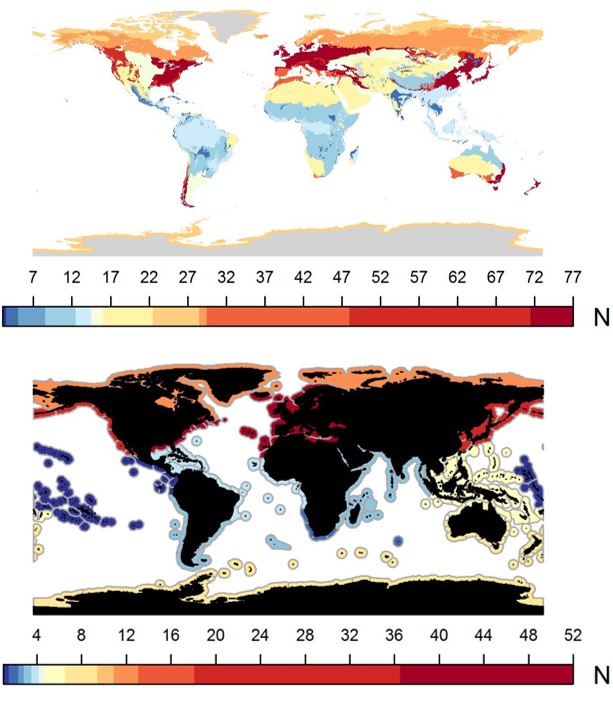La revue Ecography vient de publier en ligne l’article de Jonathan Lenoir et J-C. Svenning (Section for Ecoinformatics and Biodiversity, Dept of Bioscience, Aarhus Univ., Denmark) sur les changements climatiques.
Climate-related range shifts – a global multidimensional synthesis and new research directions
Poleward and upward shifts are the most frequent types of range shifts that have been reported in response to contemporary climate change. However, the number of reports documenting other types of range shifts – such as in east-west directions across longitudes or, even more unexpectedly, towards tropical latitudes and lower elevations – is increasing rapidly. Recent studies show that these range shifts may not be so unexpected once the local climate changes are accounted for. We here provide an updated synthesis of the fast-moving research on climate-related range shifts. By describing the current state of the art on geographical patterns of species range shifts under contemporary climate change for plants and animals across both terrestrial and marine ecosystems, we identified a number of research shortfalls. In addition to the recognised geographic shortfall in the tropics, we found taxonomic and methodological shortfalls with knowledge gaps regarding range shifts of prokaryotes, lowland range shifts of terrestrial plants, and bathymetric range shifts of marine plants. Based on this review, we provide a research agenda for filling these gaps. We outline a comprehensive framework for assessing multidimensional changes in species distributions, which should then be contrasted with expectations based on climate change indices, such as velocity measures accounting for complex local climate changes. Finally, we propose a unified classification of geographical patterns of species range shifts, arranged in a bi-dimensional space defined by species’ persistence and movement rates. Placing the observed and expected shifts into this bi-dimensional space should lead to more informed assessments of extinction risks.

Effort de recherche (N : nombre de publications) en milieu terrestre et marin.
Lire l’article
DOI: 10.1111/ecog.00967
